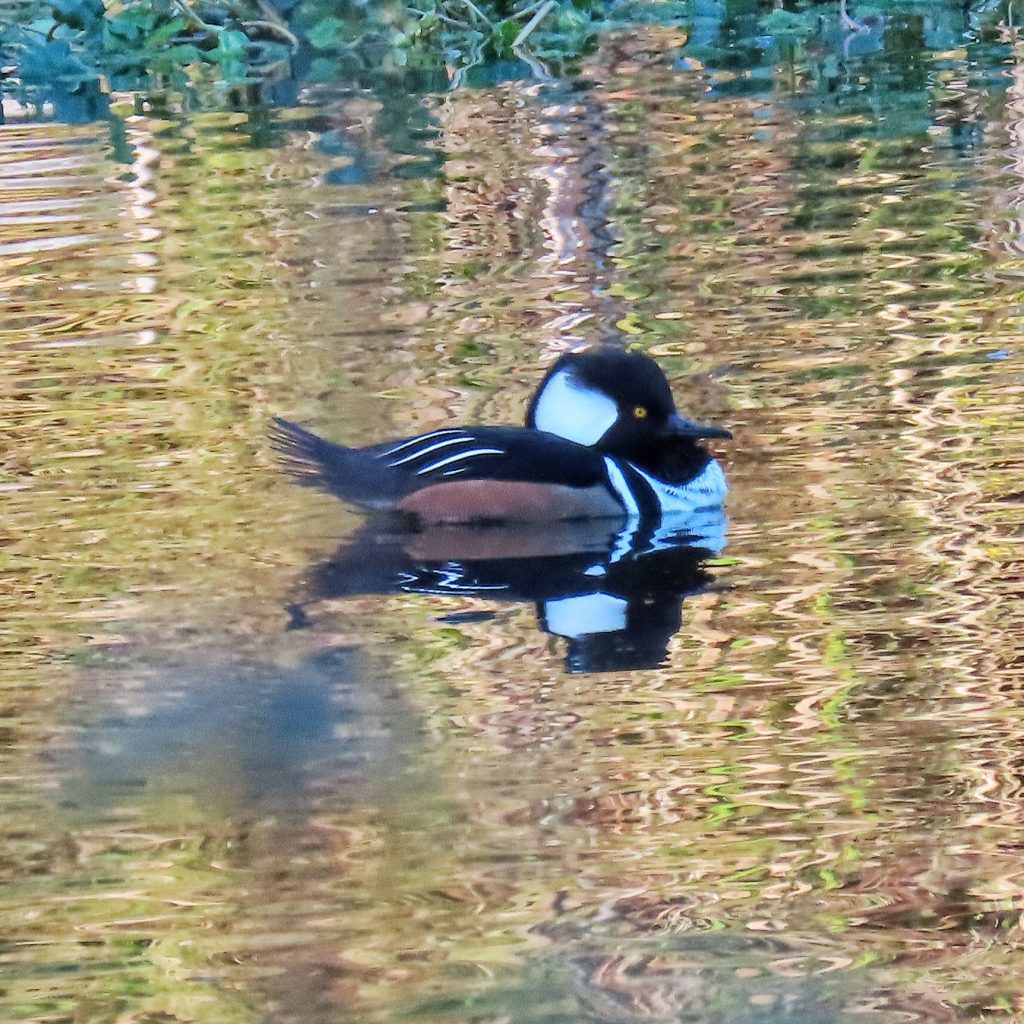
I really enjoy finding Hooded Mergansers, but I don’t personally have much to say about them. So instead I’ll just mention the fun facts about them, some of which I didn’t know until researching this post. For one thing I had never noticed that they prefer the shady side of the pond to the sunny one. Apparently the male’s bold plumage design actually works as camouflage in dappled shade.
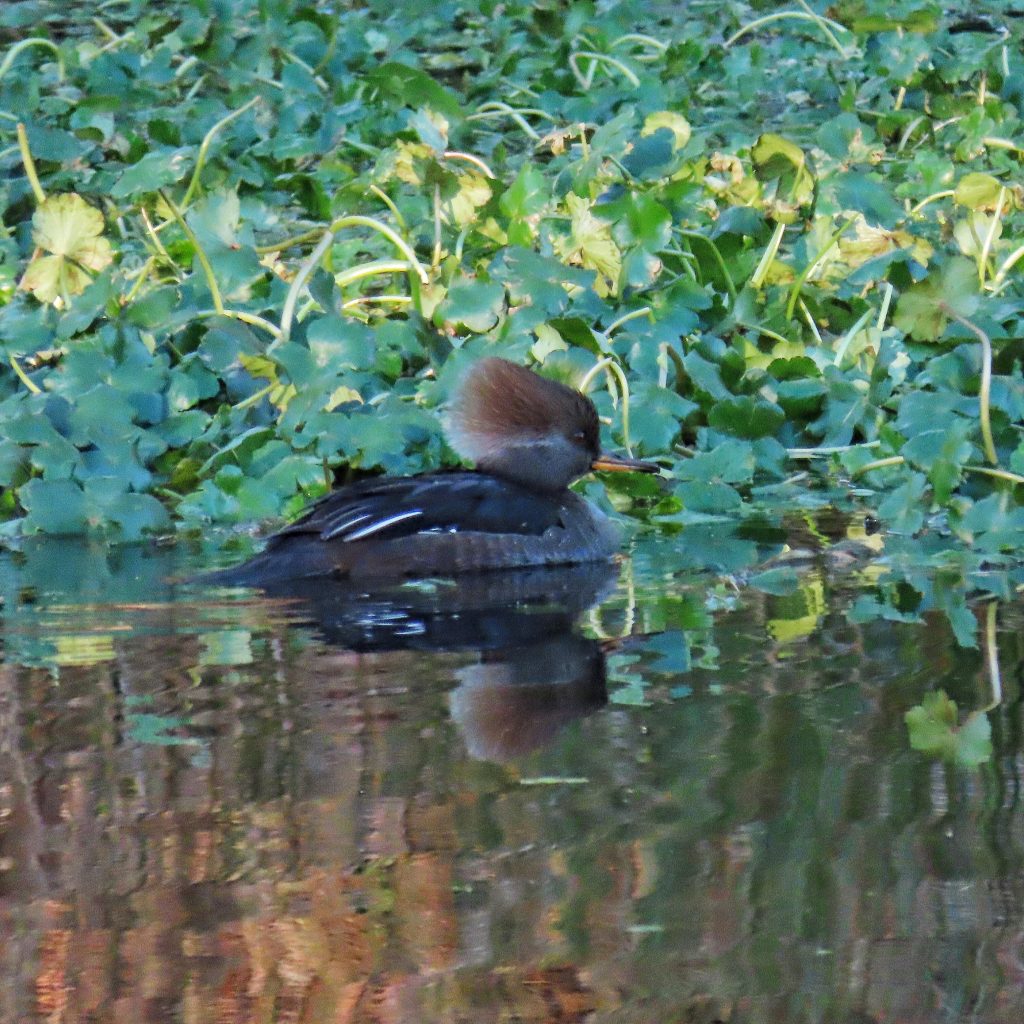
They are cavity nesters, often repurposing woodpecker dens and tree cavities. They also utilize Wood Duck boxes. Most nests are within 10’ of the ground, but can be up to 80’ in the air. Ducklings leap from the nest (probably saved on those eighty footers by their small size and the air resistance of the fluffy down) only a day after hatching, and are already capable of finding their own food. Their nests can be up to 3/4 of a mile from the water. I would love to see mama waddling through the forest leading a parade of day old ducklings to the water.
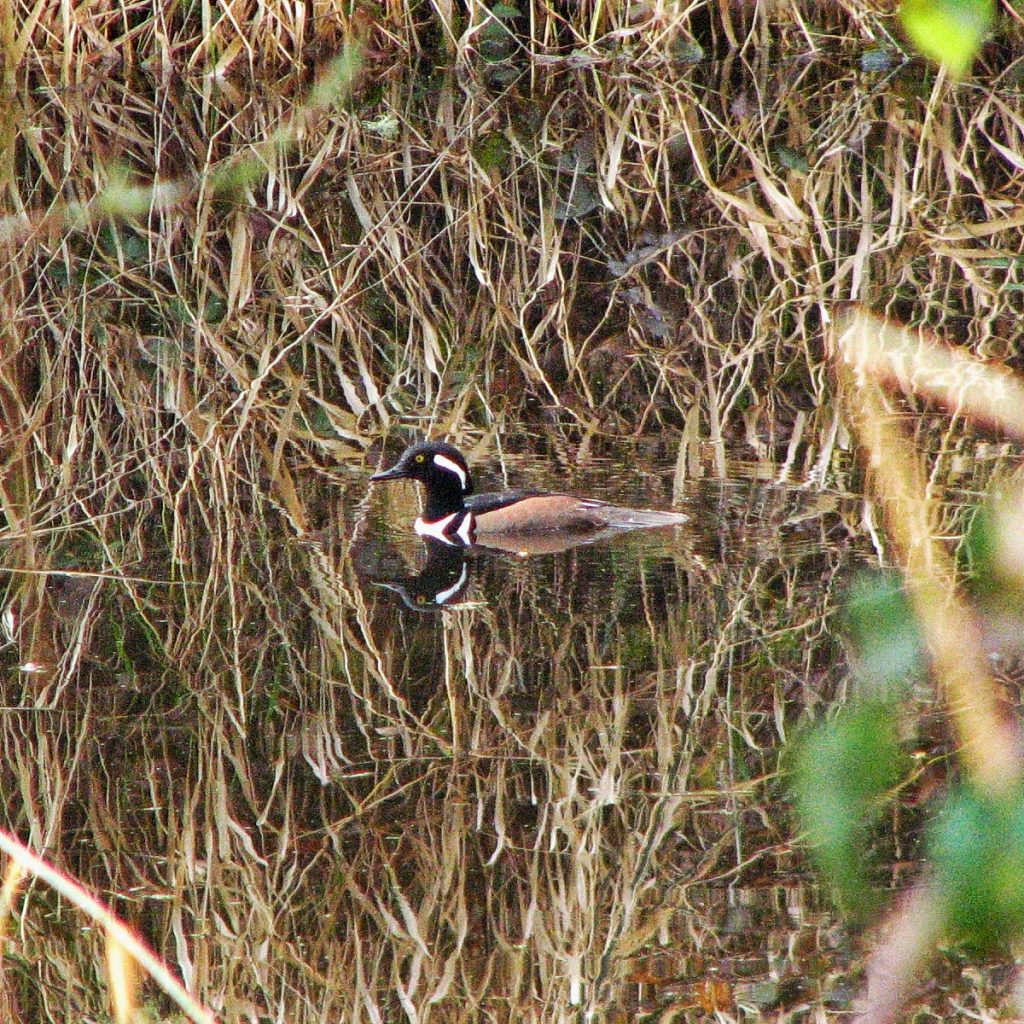
Hoodies are pretty ungainly on land, because their feet are set so far back on their bodies. But that makes them excellent divers and swimmers. They swim so well in fact that during their relatively-short-by-waterfowl-standards migrations they prefer to swim the waterways rather than to fly.
I had no idea that Hooded Mergansers were brood parasites, but it is not uncommon for the females to lay eggs in the nests of other Hooded Mergansers. The average clutch is 12-14 eggs, and yet nests have been found with 44!
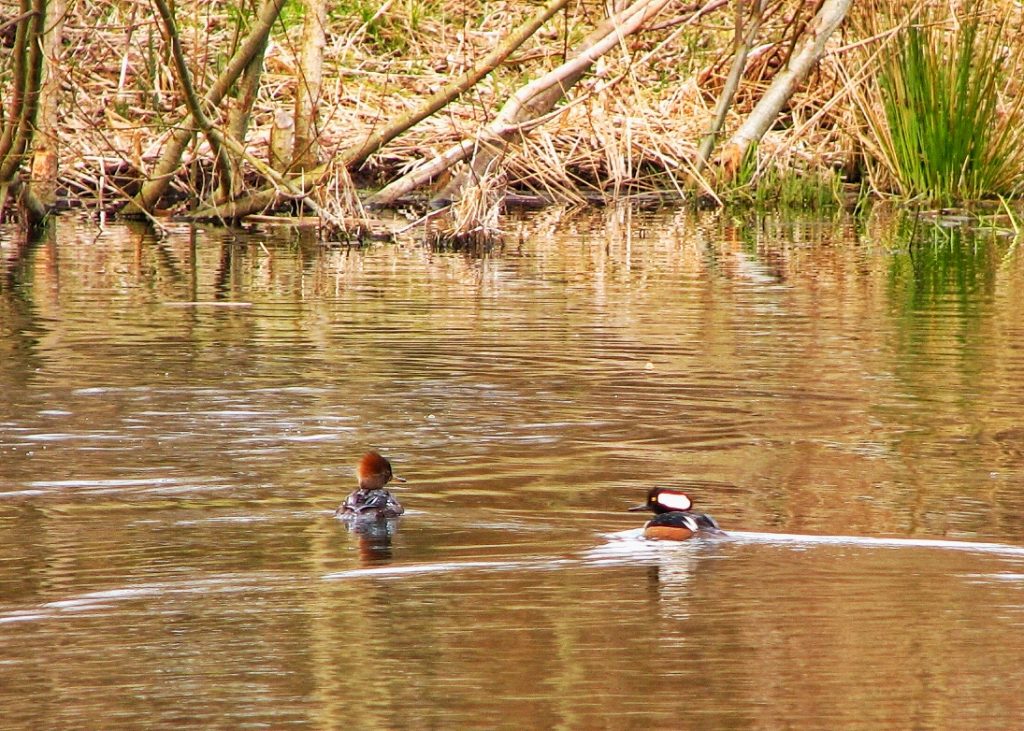
Hooded Mergansers (Lophodytes cucullatus) are the sole extant members of the genus Lophodytes. They have found fossil remains of an extinct merganser in Florida which has been placed in this genus, but it is unknown what their relationship to Hooded Mergansers was. That species has been called Lophodytes floridanus.
The genus Lophodytes lies between goldeneyes (Bucephala) and the other North American mergansers (Mergus). They share many courtship behaviors and calls with both of those groups.
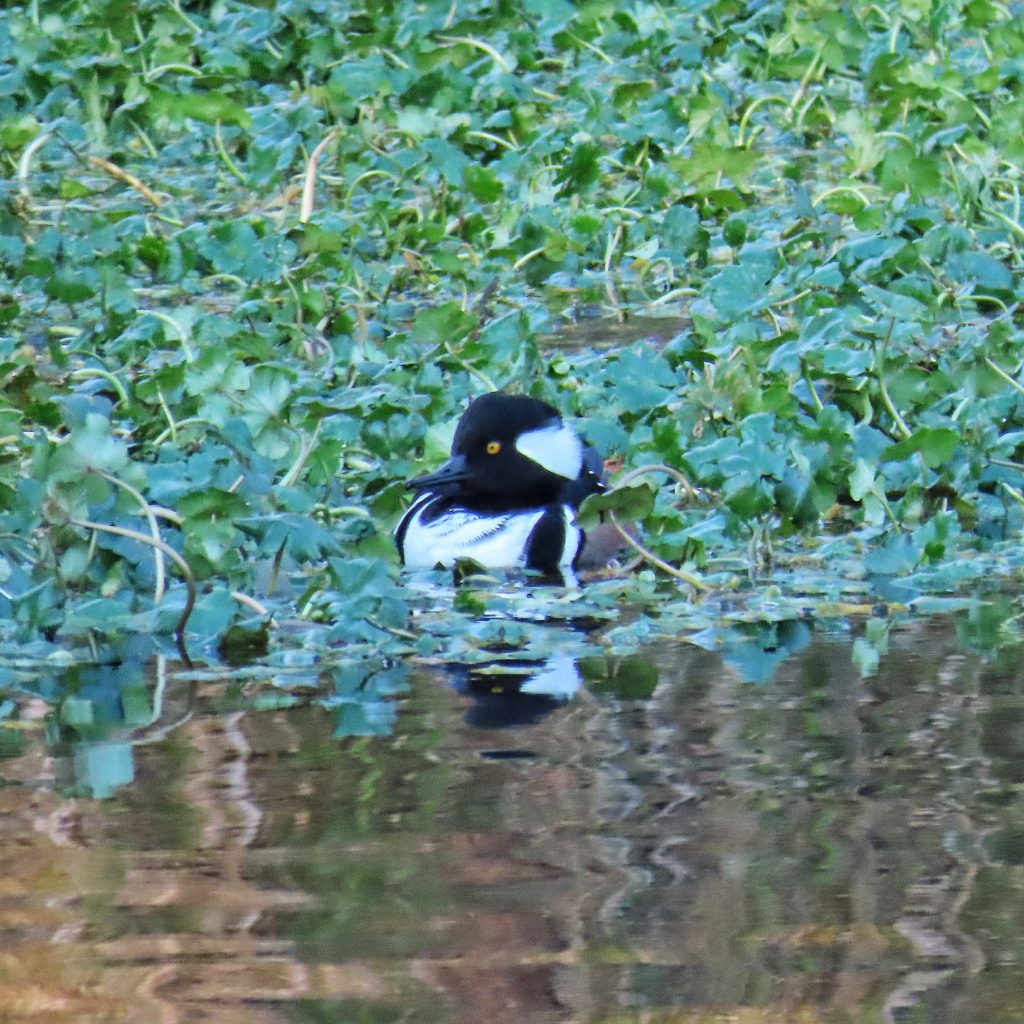
Description-Small (by far the smallest North American merganser), short-bodied ducks with a large crest and a thin, serrated bill. Breeding males with large white patch in the middle of the black crest (dramatically displayed during courtship- often folded down to a white bar at other times), chestnut sides, black back with white slashes at the rear, white breast with black slashes; females and immatures with cinnamon brown crest, dusky brown body; immature males have yellow eyes and all dark bill, like breeding males; females have dark eyes and yellow lower mandible of bill.
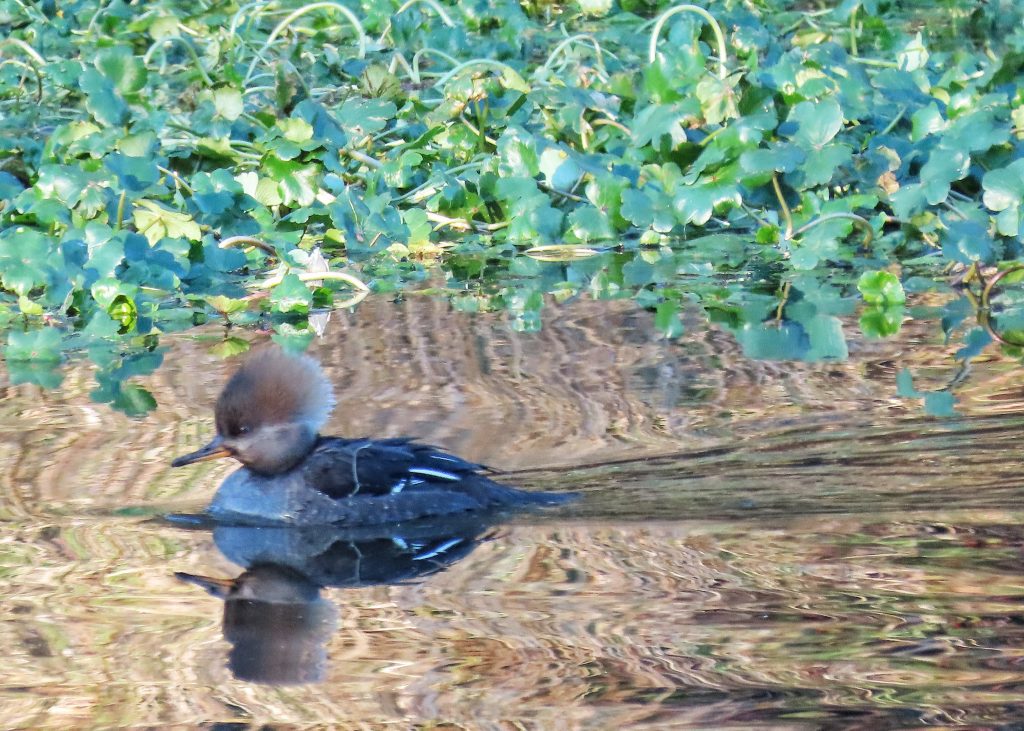
Similar species– Males are very distinctive, and if you get a good look then they are unlikely to be confused with anything else. Buffleheads have white on the rear part of their head, but it wraps all the way around the back of the head, and they have white sides and larger, broader bills; immatures and females could only be confused with Common and Red-breasted Mergansers, which are longer bodied and much larger, with longer bills in proportion to the head. And female Common Mergansers have a white breast.
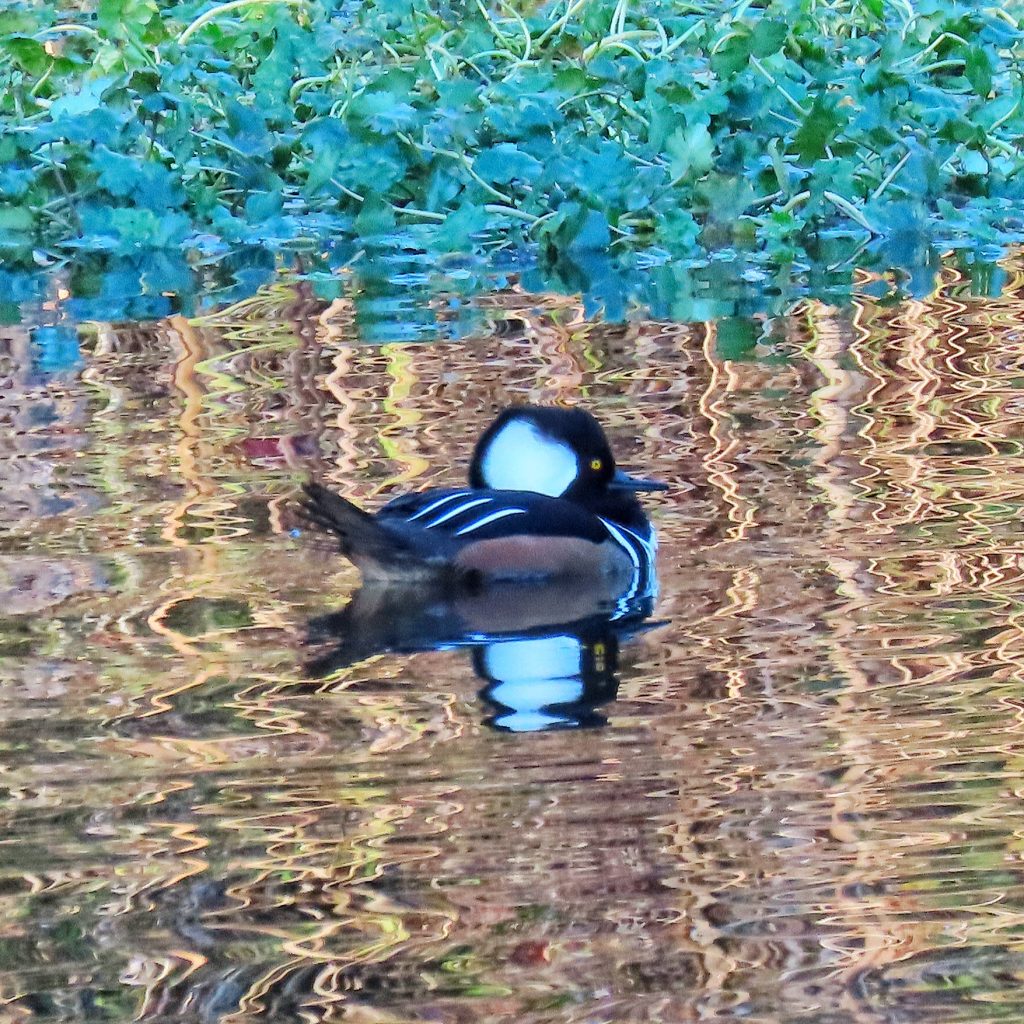
Habitat– Prefers small wooded ponds and sloughs, but can be found anywhere there is sufficient water and food.
Range-Region wide during winter. Year around and breeding west of the Cascades, southern BC, far eastern Washington, and northern Idaho.
Eats– Fish, tadpoles, some invertebrates.
Eaten by–
Adults active– Year around
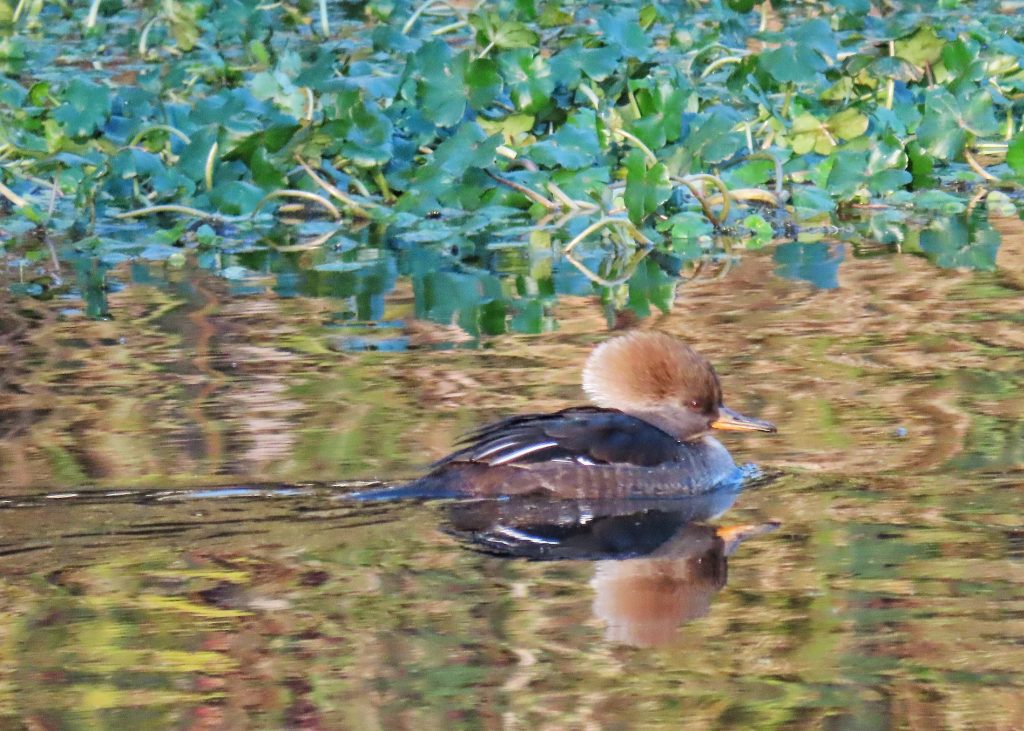
Etymology of names–Lopho– is from the Greek for ‘crest’, and -dytes is from the Greek for ‘diver’. Crested diver seems pretty spot on. The epithet cucullatus is from the Latin for ‘hooded/cowled’. This name comes all the way down from Carl Linnaeus’ Systema Naturae. Possibly Linnaeus was referring to the black crest ‘hooding’ the large white patch when lowered, although it is almost certain he never saw a live specimen.
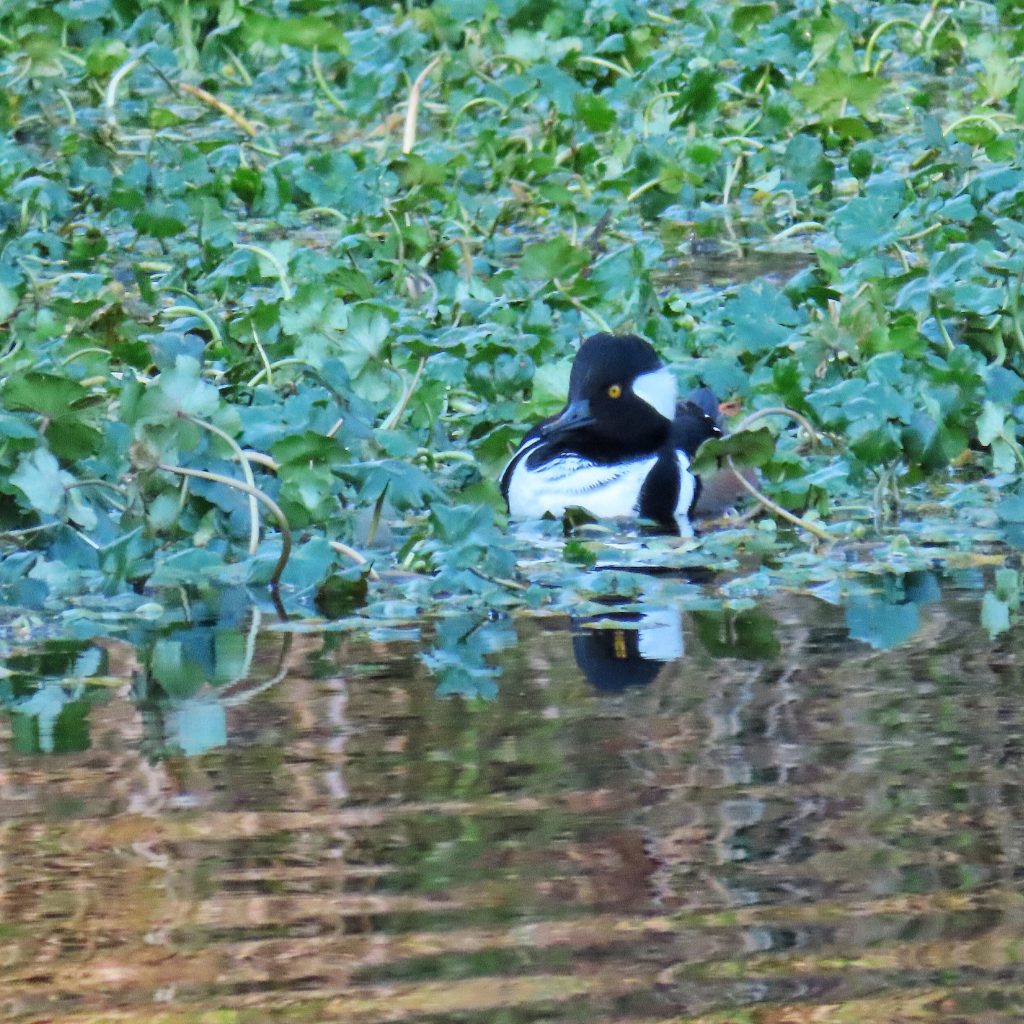
https://www.audubon.org/field-guide/bird/hooded-merganser
https://animaldiversity.org/site/accounts/information/Lophodytes_cucullatus.html
https://www.allaboutbirds.org/guide/Hooded_Merganser/overview
https://www.allaboutbirds.org/guide/Hooded_Merganser/id
http://www.birdweb.org/birdweb/bird/hooded_merganser
https://houstonaudubon.org/birding/gallery/hooded-merganser.html
https://www.ducks.org/hunting/waterfowl-id/hooded-merganser
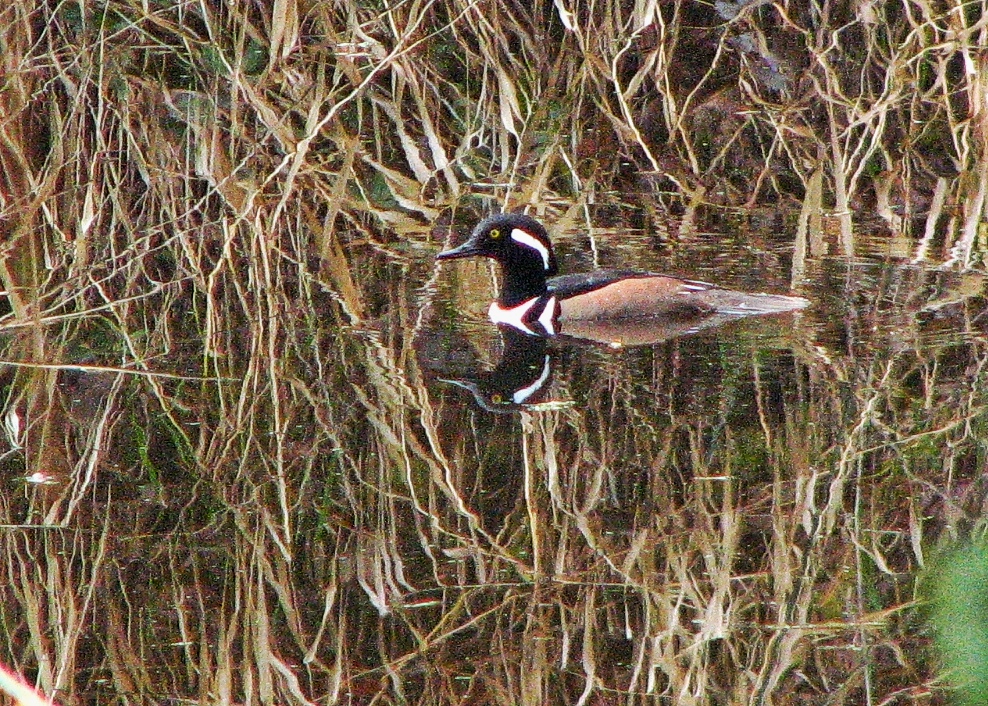
The male is definitely a uniquely striking duck! Interesting that they may prefer swimming to flying over the shorter distances.
Love watching them down here at Wm. L. Finley NWR and in IL and WI. Females are as striking, in a different way. My son just saw a pair on a cranberry bog in Massachusetts. They are ubiquitous and how great is that! And now you tell me of merganser fossils! Yes! Thanks, Dan.
Very enjoyable & interesting! I would love to see the mama leading a trail of baby ducks too!! ☺️